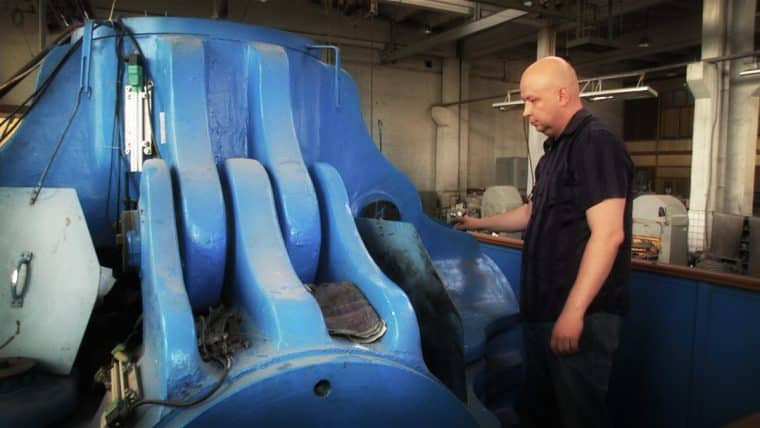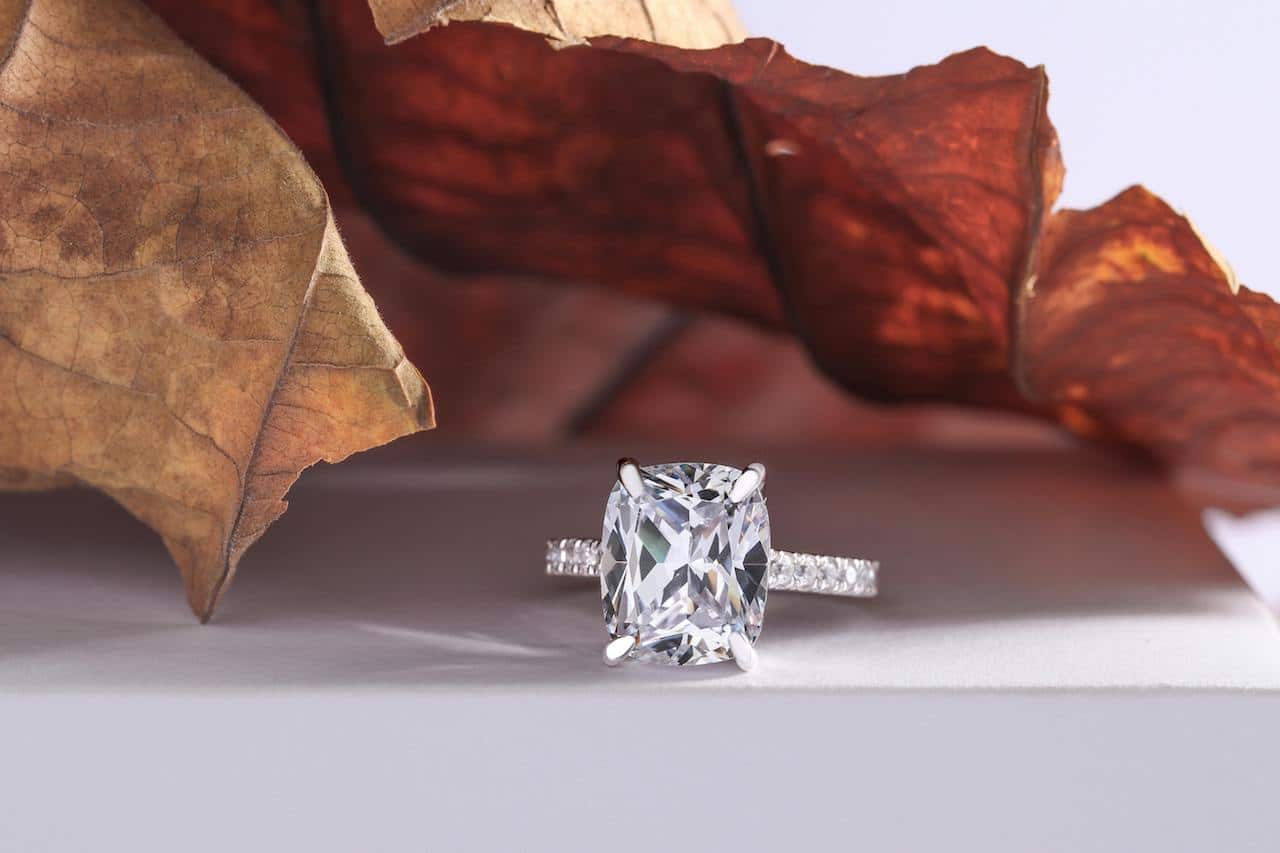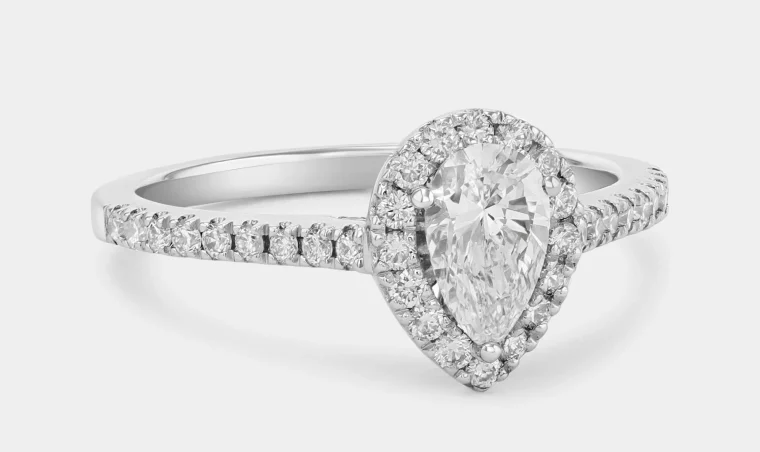The diamond industry has undergone a significant transformation in recent years amid the rise in popularity of lab-grown diamonds.
These man-made gems, which are both chemically and physically identical to their natural peers, have introduced changes in consumers’ preferences and market dynamics and have put under the microscope what luxury is all about.
Lab-grown diamonds have been around for decades, but they gained popularity in jewelry just a few years ago when the Federal Trade Commission (FTC) said that they were, in fact, real diamonds.
This decision paved the way for a new era for the diamond industry that gave legitimacy to synthetic stones and opened up a world of new possibilities for dealers, who were now able to offer them as real diamonds, while consumers were also able to access more affordable precious stones for their special occasions and gifts.
The Creation Process of a Lab-Grown Diamond: From Science Fiction to Reality

Currently, laboratories start the process of “growing” a lab-grown diamond by using a thin cut of an existing natural piece. They submit this fragment to elevated temperatures of up to 2,200 Fahrenheit and create significant pressure by flooding a vacuum chamber with hydrocarbon gases.
The result: carbon condenses out of a plasma cloud and starts to progressive crystalize to form small diamonds.
The process could take over two weeks and consumes a lot of energy – which is one of the main concerns associated with lab-grown diamonds.
However, scientists are finding more efficient methods to produce these synthetic pieces. A research institute in South Korea recently managed to lower the time that it takes to perform this process to just 150 minutes.
The new method involves the use of liquid metals like nickel, silicon, and iron. These are placed in a graphite chamber where they are exposed to gases like methane and hydrogen and are subjected to heat and cooling repeatedly.
In just 15 minutes, diamond fragments start to appear and continuous diamond films will start to emerge after two and a half hours. The process is faster, requires less pressure, and uses significantly less energy compared to traditional methods that take months to produce what the industry calls a “cake”, which is the raw product from where lab-grown diamonds are produced.
While this research is still in its early stages, it demonstrates the rapid advancements being made in lab-grown diamond technology. Professor Rodney Ruoff, who led the project, noted that “Time will tell in terms of scalability and cost,” highlighting the potential for further innovation in the field.
Even though this novel method still needs to be further tested, it is a ground-breaking achievement that could radically change the diamond market. Professor Rodney Ruoff, who led the project in South Korea, commented: “Time will tell in terms of scalability and cost,” highlighting the potential for further innovation in the field.
Half of US Couples Proposed with Lab-Grown Diamonds in 2023
Meanwhile, a survey found that out of 10,000 US couples who got married in 2023, almost half bought lab-grown diamonds for their couple.
Moreover, lab-grown diamonds are become more available and easily accessible than ever. The size of the synthetic diamonds is also growing, which makes them even more appealing to consumers.
Last year, consumers bought, on average, pieces that were 10% larger compared to 2019. Estimates indicate that lab-grown stones are at least 80% cheaper than their natural counterparts.
Companies that market these synthetic diamonds saw their revenues double last year and have recorded a 600% increase in sales since 2022. For Zimnisky, this trend “allows consumers to buy a diamond at really affordable prices, especially very large diamonds that would cost tens or hundreds of thousands of dollars if they were natural diamonds.”
What Makes Lab-Grown Diamonds So Appealing?
Although the most appealing aspect of lab-grown diamonds is their price, some other characteristics also make them stand out for consumers. For example, environmentally-conscious buyers may prefer this alternative instead of mined diamonds as the latter requires the exploitation of natural resources and dramatically changes ecosystems and landscapes across the globe.
Moreover, people who advocate for human rights protections in countries where diamonds are extracted can also avoid becoming part of the problem by buying lab-grown pieces.
Synthetic diamonds are also high-quality pieces that can be produced through a predictable method, they have excellent color, and can be shaped in a way that natural stones simply can’t by jewelry designers.
Legacy diamond companies like De Beers have suffered from this change in consumer preferences and how the industry works. In 2023, the company reported a 37% decline in annual sales despite controlling 85% of the world’s natural supply of diamonds.
De Beers was once able to control the entire supply, keeping prices high, but the inundation of synthetic diamonds destroyed its monopoly. It was forced to cut the price of mined stones by as much as 25% due to falling demand.
Although the company initially resisted and tried to run propaganda campaigns to criticize these man-made stones, it ultimately succumbed to the trend and launched a product line called Lightbox in 2018. However, they recently shut this unit down because prices of lab-grown diamonds have progressively declined as the market has become saturated by hundreds of dealers offering lab-grown pieces.
Other jewelry retailers like Pandora, which reported $38.5 million in synthetic diamond sales last year, Tag Heuer, and even the luxury giant LVMH also embraced lab-grown pieces and launched product lines that used these precious stones.
Jewelers Aim to Entice High-End Customers with Unique Lab-Grown Pieces
As diamonds have progressively moved from luxury items to commodities amid the increasing popularity of lab-grown pieces, some companies are looking for ways to market them as high-end products.
One notable player that is pursuing this goal is the Swiss jeweler LOEV, which recently partnered with Ammil, a lab-grown diamond producer, to create the first Swiss-made jewelry collection of its kind.
To appeal to environmentally-conscious consumers, they claim that their collection uses renewable sources of energy almost entirely – up to 90% – to produce these diamonds. Moreover, they are also appealing to the exclusiveness of the Swiss-made brand to promote rings that can be considered luxury goods.
For a product to be labeled “Swiss Made”, at least 60% of its value must have been added by a Switzerland-based company.
“We are able to be transparent about every aspect of the supply chain, from the diamond seed all the way to a beautiful piece of jewelry that the consumer holds in his hand,” commented the co-founder of the brand, Niels Schaefer.
He argues that there is a misconception regarding how jewelry pieces containing lab-grown diamonds are produced. Schaefer stresses that the jewelry’s work to refine the raw material produced by the laboratory is what makes its products so unique.
A lot of people think you press a button and something you’d see in one of Niels’ lovely rings just falls out of the machine. It doesn’t work like that,” he told the online news magazine Wired.
Other providers like Swarovski have also pushed to add unique value to its lab-grown pieces by adding a microscopic inscription to each stone that can certify its originality and be used as a branding tool.
Meanwhile, the lab-grown diamond brand Unsaid launched a high-end collection recently featuring a 36-carat stone that broke all records along with a ring that has five patents on it that cost $43,000.
Lab-Grown Diamond Prices Have Plummeted in the Past 5 Years
Despite the dramatic changes that lab-grown diamonds have introduced within the industry, the price per carat of these synthetic stones has plummeted by 90% in the past 5 years according to analyst Edahn Golan.
The trend is expected to continue, especially if more efficient methods are embraced by producers that reduce both the time and the cost of creating these stones in a laboratory.
Meanwhile, the resale value of synthetic diamonds is null. Pawn shops have reportedly abstained from buying these pieces and offer less than 10% of the original cost to customers no matter how size or beautiful the lab-grown diamond is.
Lab-Grown Diamonds Will Never Replace Natural Ones
As lab-grown diamonds become more common, some consumers may return to favoring smaller, natural diamonds for their rarity and perceived value. So, while lab-grown diamonds have disrupted the traditional diamond market, it is unlikely that they will fully replace their natural counterparts.
Industry experts believe that lab-grown diamonds will increasingly be seen as a separate, lower-priced market for those who don’t want to buy natural stones or as a stepping stone to eventually upgrade to a natural diamond.
“Fashion jewelry is always worth a small fraction of real jewelry,” commented Cormac Kinney, the Chief Executive Officer of the commodities trading firm Diamond Standard. “Only real is rare.”
For those who can, natural diamonds will always be the best choice as they are scarce, rare, and difficult to obtain. That’s what makes luxury items what they are, the notion that only a small group gets to wear them.

